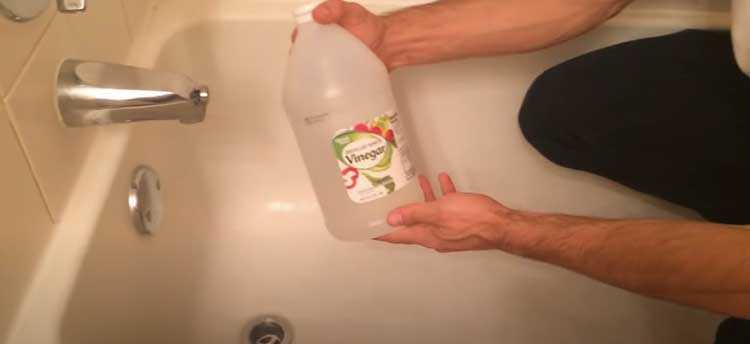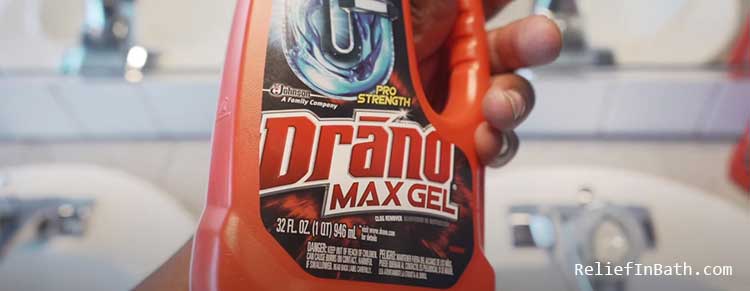Tub clogs are a common phenomenon. You can consider it to be a very complicated predicament. Usually, when tubs get clogged, people resort to using Drano.
Drano is a compound that is used to clean drains. They are heavily relied upon by people when it comes to unclogging tubs, sinks, or even drains.
But what happens when Drano does not fix this particular issue? What do you do if your tub won’t drain after Drano?
In this article, we will talk about ways in which you can unclog tubs without the use of Drano.
But first, let’s talk about clogging.
Solutions When Drano Failed To Unclog Tub Drain

There are multiple alternatives to make your tub drain again. Here are a few of them:
- Using Baking Soda
Sometimes certain elements do not dissolve even after the use of Drano. You can use baking soda to dissolve these elements.
If you apply the right amount of baking soda and also wait patiently, the element is sure to dissolve.
For every one cup of vinegar, you are recommended to add about a quarter of soda. This solution is enough to remove the blockade given the right amount of time.
This solution usually lasts for about thirty minutes. Pour some hot water as well in order to remove the stubborn stains. You can use the same technique if Drano can’t fix the shower drain clog as well.
- Using a Plunge
Plunges are available in your local supermarkets. They are one of the most effective instruments used to deal with clogs. Plunges have a rubber cup impaled on a wooden handle.
The rubber cup generates suction. In this scenario, the force of the suction is usually strong enough to break up the accumulation of materials causing the clog.
This breakage allows the smooth flow of water. But while using the plunger, you have to keep a few things in mind:
- You have to cover the drain using the cup. Without properly covering the drain, you will not be able to generate enough suction. Without suction, the use of the plunge is technically redundant.
- Grab the handle of the plunge using both hands. Move it forward and backwards. This creates a strong enough motion to create the optimum amount of suction. With enough suction, you can break the mold of tissue paper.
- If you see bits of tissue floating out from the drain, this is a sign of the plunge working. The clog is breaking up, and the drain is being cleared.
Let’s talk about natural enzymes and other solutions as well. Watch this video to learn more about it.
- Using Natural Enzymes
You will find plenty of drain cleaners in the market that contains natural bacteria and enzymes. These chemicals eat away organic waste and are not harmful to your pipes.
This method is very time-consuming, but at the same time, it is one of the easiest ways to get rid of clogs.
- Drain Snakes
For clogs near the surface, you can use drain snakes to get rid of any blockage. In order for the drain snake to work, you have to uncoil it and push it down the drain.
With a little effort on your part, the snake will break the clog apart and allow it to pass safely through your pipes.
- Using Drain Stick
Using drain claws is similar to putting the entire drainage system through a rigorous cleanup. If your drainage system has been in use for a long time but hasn’t been maintained, there could be a high chance of it being clogged.
In such cases, the clogs are very dense, and it takes a lot of effort to deal with the issue.
When you push this stick down the drain, it will help to open the drain. The stick is very flexible, and it will bend where it meets the bend. Thus, you do not have to waste a thought about the stick breaking.
When you pull it out, the stick will bring out all the solid components that have caused the clogs. Repeat this process for some time.
You could use Drano regularly to solve your tub issues, but there could be scenarios where the bathtub won’t drain after Drano. There are plenty of ways in which you can unclog your tub.
If one method does not work for you, you can always try another. When you are using chemicals or hot water, make sure to be extra careful.
These are elements that have the potential to cause harm to the body of the user.
What is Clogging and Why Does It Happen?
Like we mentioned before, clogging is a very disastrous situation. Clogging happens when water becomes stagnant and is unable to pass through via a drain.
A lot of physical matter, usually minute in size, accumulates in the drain and blocks the passage of the flow of water. Such stagnation of water is the cause of many problems and can even entail unhealthy environments.
Many different types of materials are responsible for causing clogging. These include dead skin matter, solid food particles, soap scum, threads from garments, and so on.
These matters accumulate and form large blocks in the drain. Usually, people use Drano to unclog these clogs. But that brings us to the question….
Drano And Tub’s Clog

Drano is a compound that is used as a drainage cleaner. Some people use Drano for bathtubs. It is made up of aluminum, salt, bleach, Iye, and sodium nitrate.
Several reactions happen simultaneously when you pour Drano into a clog or a drain. Initially, all the physical matters present in the drain pipes are disintegrated.
Next up, the aluminum and Lye react to raise the temperature to a boiling level. Because of this very high temperature, the decomposition of the physical matters is expedited.
Next, the Lye reacts with the grease and forms a soapy substance. This soapy substance dissolves the clogged material.
By dissolving the materials, it creates room for the warm water to wash everything away.
As all these reactions happen simultaneously, some drainage systems are unable to contain the intensity of so many reactions. As a result, there are cases in which the use of Drano made clog worse.
Some Risks of Using Drano
Even though Drano is a very popular product, there are certain hazards related to its use. Here are some of them:
- Drano has the potential to damage your eyesight or hands if it comes in contact during use. If you inhale fumes, that can also have devastating consequences.
- It has the potential to contaminate the plants and animals it comes in touch with.
- If Drano is being used in combination with other substances, toxic fumes might be produced as a by-product. This can be quite detrimental to you or those around you.
So, if you are to stop the usage of Drano, what necessary steps or methods can you follow to get similar solutions? Let us have a look at some.
Final Words
We know that prevention is better than cure. So if you are looking for a way to avoid this problem, make sure to always keep your drainage system in your tub clean.
Get rid of any small particles that might accumulate and form a big cluster.
Also, we recommend doing the proper market research before making any purchases of the products mentioned in this article.
We hope we have been able to help!
